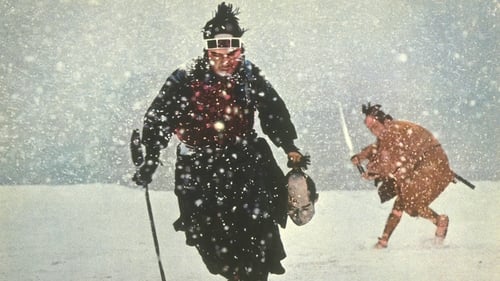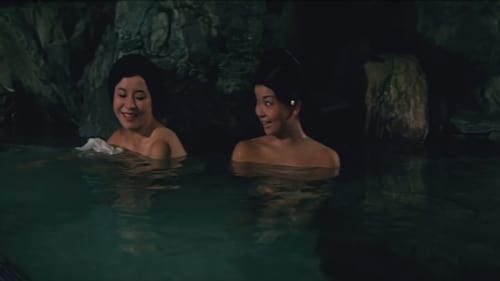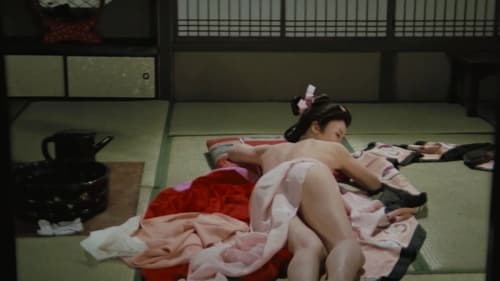Tatsumi Hijikata
Nascimento : 1928-03-09, Akita, Akita Prefecture, Japan
Morte : 1986-01-21

Himself
"Butoh: Body on the Edge of Crisis" is a visually striking film portrait shot on location in Japan with the participation of the major Butoh choreographers and their companies. Although Butoh is often viewed as Japan's equivalent of modern dance, in actuality it has little to do with the rational principles of modernism. Butoh is a theater of improvisation which places the personal experiences of the dancer on center-stage. By reestablishing the ancient Japanese connection of dance, music, and masks, and by recalling the Buddhist death dances of rural Japan, Butoh incorporates much traditional theater. At the same time, it is a movement of resistance against the abandonment of traditional culture to a highly organized consumer-oriented society.

Himself
The dark sensibilities and cultural resonances of Butoh, the radical Japanese dance movement, are explored in this multilayered work. Profoundly rooted in both traditional and contemporary Japanese culture, Butoh arose in a spirit of revolt in the early 1960s. Characterized by frank sexuality and bodily distortions, Butoh transforms traditional dance movements into new forms, stripping away the taboos of contemporary Japanese culture to reveal a secret world of darkness and irrationality.

The movie compiles footage taken by Ogawa Production for a period of more than ten years after the collective moved to Magino village. Unique to this film are fictional reenactments of the history of the village in the sections titled "The Tale of Horikiri Goddess" and "The Origins of Itsutsudomoe Shrine". Ogawa combines all the techniques that were developed in his previous films to simultaneously express multiple layers of time—the temporality of rice growing and of human life, personal life histories, the history of the village, the time of the Gods, and new time created through theatrical reenactment—bring them into a unified whole. The faces of the Magino villagers appear in numerous roles transcending time and space—sometimes as individuals, sometimes as people who carry the history of the village in their memories, sometimes as storytellers reciting myths, and even as members of the crowd in the fictional sequences.

Dancer
A freestyle, imagined telling of the life of shaman queen Himiko, who falls in love with her half-brother, making her powers weaken thus putting her position to risk.

Ankoku Butoh is a style of avant-garde dance that established itself in the counter culture experimental arts scene of post WWII Japan. The dance form is thought to have been founded by Tatsumi Hijikata, who both created and performed in butoh pieces from the late 1950’s - through the early 1970’s. In butoh, the style of movement is extremely stylized and deliberate, vacillating between slow and sharp, expressing feelings of dread, sexualization, violence, calmness, birth and “creatureness” among other things. This 1973 performance of Summer Storm at Kyoto University was Hijikata’s last public performance before his death in 1986.

The film depicts the youth of Kinzo, a heretic painter who worked in Tosa during the late Edo period, and the hurricane-like inner side of his life.

Leader
Murase is a bodyguard of yakuza group. Ochiai is a police officer who once was a student activist. When they meet, they are surprised how identical they look.

Ushimatsu / Hunchback Dancer
Akemi é um líder dos dragões tatuados do clã Tachibana Yakuza. Em um duelo com uma gangue rival, Akemi corta os olhos de um oponente e um gato preto aparece, para lamber o sangue que jorra da ferida. O gato e a vítima perseguem a gangue de Akemi para se vingarem, deixando um rastro de meninas Yakuza mortas, suas tatuagens de dragões esfoladas de seus corpos.

Jôgorô Komoda
Hirosuke (Teruo Yoshida), um estudante de medicina com quase nenhuma lembrança do seu passado, está preso num asilo, apesar de ser perfeitamente são. Depois de escapar do hospício, e sendo enquadrado pelo assassinato de uma menina de circo, ele vê a foto de um homem recentemente falecido, Genzaburo Komoda, a quem ele tem uma estranha semelhança. Ao fingir ter sido ressuscitado, Hirosuke assume a identidade do homem morto, enganando todos, incluindo a viúva e amante de Komoda. Enquanto na casa de Komoda, Hirosuke recorda memórias que o convencem a viajar para uma ilha próxima, a casa de Jogoro, o pai de Genzaburo. Enquanto na ilha, Hirosuke não só descobre os planos de Jogoro para construir sua "comunidade ideal" (transformando seres humanos perfeitamente normais em aberrações hediondas), mas também a terrível verdade por trás da sua própria identidade.

Jailer
This anthology film consists of nine incidents in the late 19th and early 20th centuries when assassins changed the course of Japanese history.

Enquanto ele realiza uma autópsia no cadáver de sua esposa (que aparentemente cometeu suicídio), um cientista forense tenta entender quais mecanismos que podem levar as mulheres a cometer atos de violência extrema. Ansioso por saber mais, mergulhou na leitura dos registos criminais, para extrair quatro casos que chegaram às manchetes da época. Um deles diz respeito a um violador e assassino em serie, mas os outros três envolvem mulheres, que foram mortas por diferentes razões: paixão, loucura ou ganância.

Comédia sobre camareiras sensuais em um resort de águas termais.

Ankoku Butoh dancer
Uma coleção de histórias que tratam da punição para com as mulheres.

Dancer
"A work documenting Ankoku Butoh dancer Tatsuji Hijikata’s Revolt of the Flesh (Nikutai no hanran). The work established the relation between Revolt of the Flesh with uprising through the unique methods of photography and editing that is found in Jonouchi’s Gewaltopia series (1968) which represented the student protest movement." - Collaborative Cataloging Japan

A document of Tatsumi Hijikata's Butoh dance with Kazuo Ohno as the guest dancer shot in Hijikata's early period when he was emerging as the originator of Butoh. All of the male dancers are dressed up with evening suits and move gracefully, yet an intruder breaks up the whole scene abruptly. The film is worth seeing, even if just to see a memorable gay duet of Hijikata and Ohno. Overexposed, washed out images are sandwiched among normal ones.

Anma (The Masseurs) is a representative and historical work by the creator of Butoh dance, Tatsumi Hijikata in his early period in the 1960s. The film is realized not only as a dance document but also as a Cine-Dance, a term made by Iimura, that is meant to be a choreography of film. The filmmaker "performed" with a camera on the stage in front of the audience. With the main performers: Tatsumi Hijikata and Kazuo Ohno, the film has the highlights such as Butohs of a soldier by Hijikata & a mad woman by Ohno. There is a story of the mad woman, first outcast and ignored, at the end joins to the community through her dance. Inserted descriptions of Anma (The Masseurs) are made for the film by the filmmaker, but were not in the original Butoh. The film, the only document taken of the performance, must be seen for the understanding of Hijikata Butoh and the foundation of Butoh.

Short film in which butoh dancing is used to reflect on the nuclear bombings of Hiroshima and Nagasaki.













